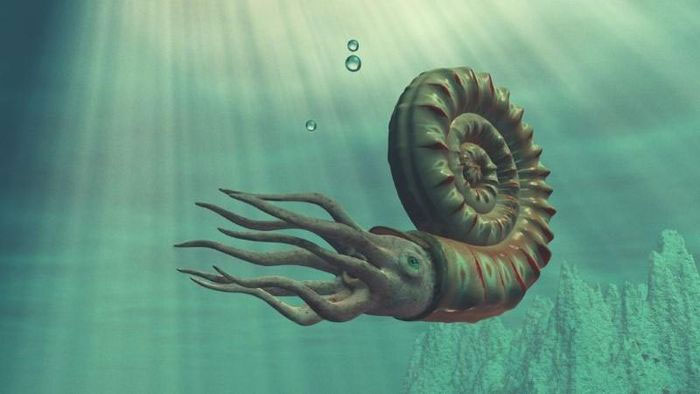A new study reveals that approximately 80 million years ago, giant marine creatures belonging to the subclass Ammonoidea emerged in the Atlantic Ocean.
These creatures, part of the subclass Ammonoidea, are related to a group of shelled animals that went extinct around 66 million years ago. The largest Ammonoidea fossil ever discovered belongs to the species Parapuzosia seppenradensis. This fossil was found in Germany in 1895, featuring a massive shell measuring 5.7 feet (1.7 meters) in length.

Giant Ammonoidea may have faced evolutionary pressures.
Despite being discovered over a century ago, very few Ammonoidea fossils of similar size have been found since then. This raises significant questions about how and when P. seppenradensis evolved to achieve such impressive size.
In a new study published on November 10 in the journal PLOS One, scientists examined 154 Ammonoidea fossils, including several historical specimens and over 100 newly discovered fossils collected from the UK and Mexico.
Based on this analysis, they found that P. seppenradensis appeared on both sides of the Atlantic Ocean about 80 million years ago. They likely evolved from a smaller species known as Parapuzosia leptophylla, which measured only about 3.2 feet (1 meter).
The research team traveled to a site approximately 25 miles (40 kilometers) from Piedras Negras in northern Mexico. They discovered 66 Parapuzosia specimens, including the giant P. seppenradensis and the smaller P. leptophylla. The fossils varied in size from 0.3 to 4.8 feet (0.1 to 1.48 meters), representing different stages in the developmental cycle of Ammonoidea.
While classifying the different Parapuzosia specimens, the research team also dated the sediment layers from which the specimens were found. They discovered that the P. leptophylla specimens dated back to the Santonian stage (86.3 million – 83.6 million years ago).
Meanwhile, P. seppenradensis appeared in younger sediment layers, dating from 83.6 million to 72.1 million years ago. During the early Champagne stage, the fossils discovered were increasingly larger.
Fossils of similar circumference were also found in the Atlantic Ocean. When analyzing the samples, the research team noted that these giant creatures seemed to have appeared simultaneously on both sides of the Atlantic.
“There must have been some connection between the populations on both sides, as they exhibit a simultaneous evolutionary process,” said author Christina Ifrim, a researcher at the Bavarian Natural History Collection in Germany.
Scientists speculate that these Ammonoidea may have faced evolutionary pressures to avoid predation by mosasaurs. However, there is currently no direct evidence that mosasaurs hunted P. seppenradensis.


















































